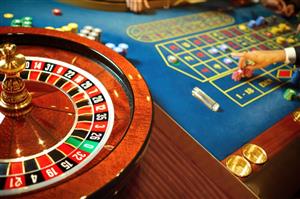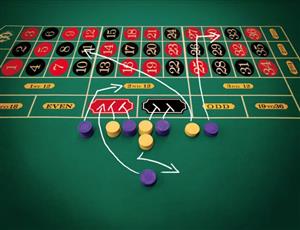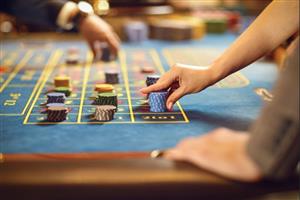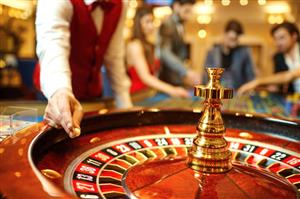Reverse Fibonacci Roulette Strategy
The Reverse Fibonacci roulette strategy aims to improve upon the original Fibonacci system. But does it? Find out that and more here.
- Reverse Fibonacci Roulette Odds
- Reverse Fibonacci Roulette System Review
- Reverse Fibonacci Roulette Success Stories
- Roulette Strategy News
Reverse Fibonacci Strategy
Many classic roulette betting strategies such as Martingale, D’Alembert and Fibonacci are negative progression systems, meaning that you increase the size of your bets after a losing round. These systems also have ‘reverse’ method where you increase your bets only after a winning round. On other pages, you will find our reviews for the reverse Martingale and the reverse D’Alembert. Now, it’s time to analyse the reverse Fibonacci roulette strategy.
Before diving into this roulette strategy, let us briefly explain the standard, negative progression Fibonacci system for those who are unfamiliar. It is based on the Fibonacci numbers, which is sequence where each number is the total of the two that preceded it.
(0), 1, 1, 2, 3, 5, 8, 13, 21, 34, 55, 89, 144, 233, 377, 610, 987, 1597, 2584
When used for roulette betting, a player will begin at the first 1. If the bet loses, they move on to the next number in the sequence, in this case the second 1. As you can see, the bet sizes increase the more consecutive losses you suffer. However, when you win a round, you move back two numbers in the sequence. For instance, if your bet was 8 and you won, your next bet would be 3. The exception to this rule is if you are betting on the second 1 and you win, you then return to the beginning.
Reverse Fibonacci Roulette Odds
Moving on to the reverse Fibonacci strategy. This uses the exact same method but it’s a positive progression, so you increase your bet after winning rounds and decrease it if you lose. Also, after a win, you move on to the next number in the sequence (left to right) and a loss results in you dropping back two numbers (right to left). Let’s have a closer look at some simulations to see how effective the reverse Fibonacci is:
| No. of spins | 1 | 2 | 3 | 4 | 5 | 6 | 7 | 8 | 9 | 10 | 11 |
|---|---|---|---|---|---|---|---|---|---|---|---|
| Stake Amount | 1 | 1 | 2 | 1 | 1 | 1 | 1 | 1 | 1 | 1 | 1 |
| Win / Lose | W | W | L | L | L | W | L | L | W | W | L |
| Profit / Loss | 1 | 2 | 0 | -1 |
Straight away, you can see (on the table above) that after the 10th round, we had won five and lost 5, yet we were down on our bankroll (-1 at that time). If we were flat betting, we would have been better off than that.
The reverse Fibonacci roulette odds have no bearing on the casino’s advantage for the game. Ideally, you want to play French roulette with the la partage rule. This gives you half your stake back on even money bets if the ball drops in the zero (0) pocket. The house edge under these conditions is only 1.35% which is tremendous value. The next best variant is European roulette; this has a house edge of 2.70%. By far the worst variation is American roulette because its wheel has zero and double zero, giving the casino an advantage of 5.26%.
Reverse Fibonacci Roulette System Review
From the reverse Fibonacci roulette system review data, it is clear to see that this strategy heavily relies on long winning streaks. Here is an example with the player winning 8 games in a row. Although the large 9th bet lost, not all the profits were wiped out. Also, because you then jump backwards two numbers in the sequence, you can absorb a couple of losses and still return a small profit. That said, the probability of winning 8 games on the bounce is very slim, but it does happen every now and then.
| No. of spins | 1 | 2 | 3 | 4 | 5 | 6 | 7 | 8 | 9 | 10 | 11 |
|---|---|---|---|---|---|---|---|---|---|---|---|
| Stake Amount | 1 | 1 | 2 | 3 | 5 | 8 | 13 | 21 | 34 | 13 | 5 |
| Win / Lose | W | W | W | W | W | W | W | W | L | L | L |
| Profit / Loss | 1 | 2 | 4 | 7 | 12 | 20 | 33 | 54 | 20 | 7 | 2 |
However, you can still get in trouble when your winning run comes to an end. As we lost the first 3 rounds in the stimulation below, we were starting on the back foot. So, even though we had 6 wins out of 11, we still ended up at -2 due to the 10th bet wiping out our profits.
| No. of spins | 1 | 2 | 3 | 4 | 5 | 6 | 7 | 8 | 9 | 10 | 11 |
|---|---|---|---|---|---|---|---|---|---|---|---|
| Stake Amount | 1 | 1 | 1 | 1 | 1 | 2 | 3 | 5 | 8 | 13 | 5 |
| Win / Lose | L | L | L | W | W | W | W | W | W | L | L |
| Profit / Loss | -1 | -2 | -3 | -3 | -2 | 0 | 3 | 8 | 16 | 3 | -2 |
Reverse Fibonacci Roulette Success Stories
There aren’t too many reverse Fibonacci roulette success stories to be heard because ultimately, this betting system is not among the best roulette strategies to use.
You need to hit good winning streaks and win more games than you lose for this method to work. And, the law of the game clearly shows us that the casino will win more than the player, so it is flawed in that respect.
If you want to test the reverse Fibonacci out for yourself, we advise putting a cap on the number of consecutive wins. One recommendation is to not increase your stake after winning 3 games in a row, so you bet the same amount on the fourth game. However, this usually means you are usually betting 1, 1, 2 and 3, which gets a bit tedious in all honesty.
You can also tweak the betting sequence. You might only use the second 1, so when you win a round, you jump straight up to 2 instead of betting another 1 again. All roulette betting strategies are flexible, allowing you to adjust them as you see fit.









